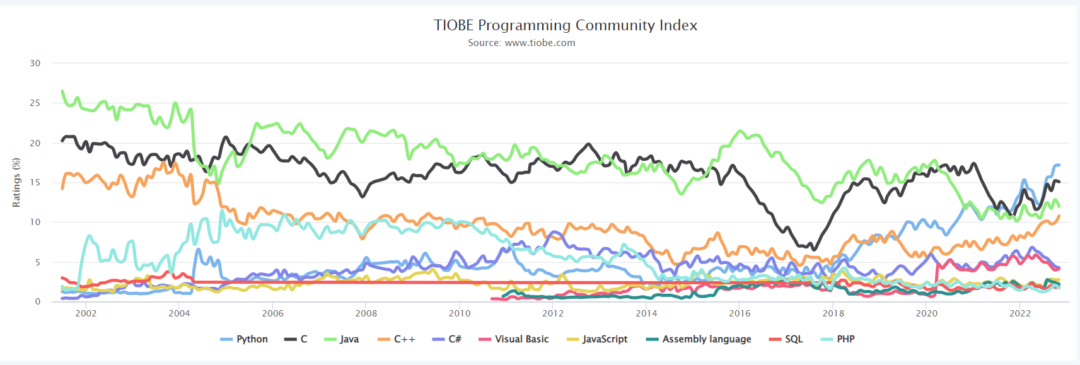Get a Refresh on the Most Demanded Backend Technologies
Back-end technologies give websites and web applications fuel: scalability, responsiveness, and functionality.
If you are a decision-maker of a forthcoming or ongoing web project, especially if you are not a tech expert and just want to make a deeper dive into the backend technologies, you may find this article useful.
What is Backend Development?
Backend development is an important part of website or web application creation and handles questions that regard system architecture, databases, servers, security, APIs, data analysis, scalability, operating system, etc. That is, that’s all that users can’t see.
Advantages you may get by utilizing backend development technologies:
- Less development time, higher productivity
- Fewer security issues
- Bettered scalability characteristics
- Flawless integration
How Frontend is Related to Backend: Key Differences
Web development is commonly categorized into three types according to the primary functions of a website or web application – front-end development, back-end development, and full stack which combines both.
Front-end development handles browser and user interactions. Front-end is focused on the user interface (or client-side), that is on visible elements of the website (buttons, links, forms, lists, etc), using technologies namely HTML, CSS, JS, etc. Don’t confuse web designers and front-end developers: devs convert designs into working software.
Back-end development (server-side) is responsible for building the logic and supporting website speed and efficiency optimization. So, backend devs take on a range of duties to make the software perform properly through the use of scripting languages, technologies, and databases.
Front-end developers and back-end developers cooperate tightly.
Backend Technologies and Their Most Suitable Use Cases: Top Picks in 2022
There are numerous backend languages and technologies. Basically, we can distinguish between, to name a few:
- Web development: Python, Java, PHP, Ruby, Golang, C#
- Server management: Linux, Microsoft IIS, Apache, Nginx
- Database platforms: Oracle, SQL, MySQL, Mongo
- APIs: JSON, SOAP, REST
- Cloud Services: GCP, AWS
Which language will dominate is predicted by services like TIOBE Index (Software Quality Company), Stack Overflow Developer Survey, and web technology survey of W3Techs, which collect statistical data. Let’s dig deeper into the backend technologies based on the list of the leading ones.
Python
Python is another trendy general-purpose programming language. Not only can it boast easy-to-remember syntax and shortcode length, which maximizes programmers’ productivity, but it also has lots of powerful tools for data processing. Python serves a great variety of purposes: web and software development, automation tasks, database analysis, and visualization. Uber, Meta, Netflix, Dropbox, and Spotify benefit from Python.
PHP
PHP, or Hypertext Preprocessor, currently holds the title of the most popular back-end language for web development. Due to the low learning curve, PHP has already gained favor with developers, a massive code base, and multiple open-source developer communities, members of which are always happy to support newbies. This language is widely used to power the back-end for products set up with WordPress – hence, its popularity and relevance.
Java
Java is the most popular high-level object-oriented programming language. This general-purpose language allows excellent cross-platform compatibility. A compiled Java code can run on any device with the Java Virtual Machine installed. Java can be used to develop mobile applications, mobile games, web-based and cloud-based applications, IoT apps, and finally Big Data technology.
C++
C++ represents a perfect combination of key features of the C language with such elements of object-oriented programming like classes. This is a low-level programming language, as the developers mainly use C++ to work with system hardware for more efficient performance. Therefore, C++ is the ideal programming language for various video games, substantial web applications, and other projects that demand premium system-level performance.
C#
C# is a scripting language created and employed on Windows environments and servers. If your company’s tech stack is based on Microsoft products and solutions (for example, ASP.NET), C# will be a great choice. This language is also used to develop mobile games on Unity.

The Most Appropriate Backend Technologies For Startups
Sometimes more than one technology seems to fit your project. When it is not quite obvious what technology to choose, take into account factors like project size and industry, development speed, and level of support. Besides that, mind your team’s expertise and tech talent availability.
Nowadays, backend development is determined by numerous frameworks, written in the most popular languages: mainstream Django and Flask (Python), Express.js and Spring (JavaScript), Laravel and CakePHP (PHP), beginner-friendly Ruby on Rails (Ruby), etc., which are in vast demand.
How to Hire a Back-end Developer for Your Team?
Just reading a resume and relying on your intuition is not enough for selecting a top-notch developer with a proven tech record, which will strengthen your team.
Backend devs’ key in-demand skills may include, but are not limited to the following:
- business logic development;
- system architecture building;
- data science analysis;
- web and mobile application backend development;
- secure data storage;
- payment process configuration.
Besides coding skills, they have to possess a set of soft skills like being innovative, communicative (both verbal and written), well-organized, planning, and matching your corporate culture.
Backend developers are in extremely high demand. You may apply different approaches to involving new talents: your own HR team, agency, recruiters, or find freelancers via some service (Upwork, etc).
If you consider a more cost-effective and time-consuming solution use the recruitment agencies’ service as Talentica to complete your project team. Their hiring counselors will validate the requirements and distinguish great candidates after evaluating their competencies.
Wrapping up
What back-end technology should you choose? Solving this task could be tricky. The choice depends on your project specifications and your development team’s expertise. It’s advisable to do a little research or take consultations before finally opting for a certain technology stack. Also, consider code transparency, and future-oriented support.
November 09, 2022





